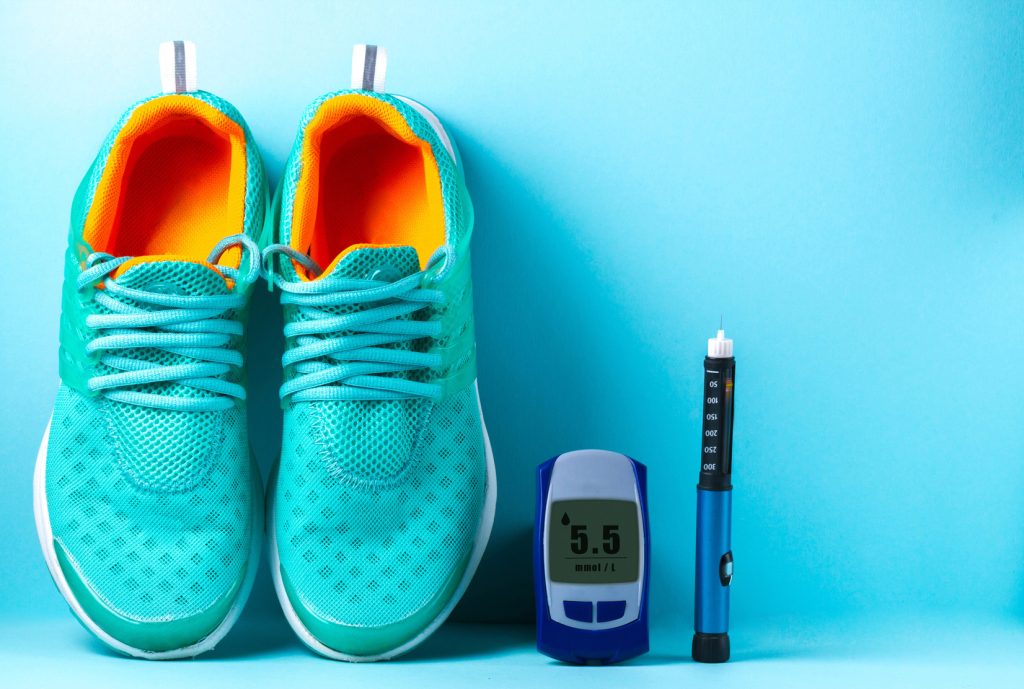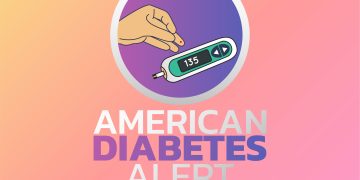The world counts annually a terrible increase in the number of people with diabetes, as well as a suspicious increase in the death rate, which has become like the inherent enemy, causing the pancreas to be unable to produce insulin normally, the body declares its inability to use a vital «hormonal» living substance Effectively despite its production, it creates chaos and disrupts the sugar level in the blood then continues to penetrate through large areas to control it and causes accumulated damage to several parts of the body until it burdens it with various types of diseases, especially nerves, blood vessels, so the patient becomes incapacitated little by little and over the years unable to perform normal functions in life.
Diabetes defeated scientists For decades, researchers dropped research and canceled others while imposing the theory of «coexistence» on it’s victims who were accustomed to a «chronic disease» and accepted the idea of «surrender» in the absence of a final cure.
Diabetes may seem like a classic disease known to the public in particular with clear features and symptoms, available diagnosis that does not raise much fuss around it due to the severity of people accustomed to it and their coexistence with it, unlike other incurable and deadly diseases that have come to be called diseases of the era, but it is still the direct cause of More than a million deaths since 2016, where the world recorded during the period between 2000 and 2016 a rise in the rate of premature deaths.
This resulted in a 5% decrease in the probability of dying from other diseases such as cancer, cardiovascular diseases and respiratory diseases for the age group between 30 and 70 years old, during the same period by 18%.

Between a pattern that relies on insulin to enhance its production or compensate for the deficit that prolonged the process and its causes even means prevention are still unknown despite the medical development taking place in the world, a pattern that occurs due to the body not effectively exploiting a hormone that depends on a healthy diet, some subsidized drugs and excising.
Diabetes remains a chronic disease threatening an increase on number of people affected by it, it exceeds 422 million people across the world, creating for itself an independent continent and a special society whose members are similar in terms of symptoms, its negative consequences resulted a healthy diet followed , a cumbersome medication like insulin, patients have diabetes World Day on November 11th of each year under the banner of disease prevention In search of reducing its risks , improving conditions of care for those affected by it within research framework.
The world health organization is reminded every year about appropriate solutions to continue investing in order to establish a system of universal health coverage.
A century of healthy dominance … and insulin «not for everyone»
Insulin was included in the World Health Organization’s List of Essential Medicines in 1977, but its discovery and adoption as a treatment for diabetes was made available nearly a hundred years ago, so this drug was on the throne of treatment for a very long period , but it was not available to everyone considering its exorbitant prices, especially in countries suffering financially, as declared by the World Health Organization in 2006, more than 65 million people with type «2» patients needed insulin, but half of them are unable to obtain , what drives them to live without it and endanger their lives, while people with type «1» cannot do without the insulin that keeps them alive and thus They will have to pay the costs even it is high.
Despite the abundance of supply in this important vital hormone whose production is controlled by three manufacturers in most of the global market for insulin, its prices still constitute an obstacle for many countries of the world, especially countries with poor incomes, which increased the expansion of the danger circle and exposing patients to death or deterioration Their health status, knowing that the data collected by the World Health Organization between the years 2016 to 2019 From 24 countries across four continents, they confirmed that «human insulin is available in 61 percent of health facilities and insulin analogs are available in only 13 percent.»

The same data also showed that the costs of this treatment may cost a factor equivalent to 22 percent of his/ her monthly income, which proves that insulin is not affordable to everyone, as we mentioned due to its high costs, although people with type 1 diabetes need it to preserve their lives, as a study revealed Another year in 2018 that more than 25 percent of diabetes patients in the United States of America abandoned insulin therapy due to its exorbitant prices, which was also confirmed by a survey conducted on nearly 200 American patients of types I and II.
Comorbidities and the foster care ratio determine the number of victims worldwide
Diabetes is not satisfied with itself and its symptoms in controlling and weakening the body, but rather causes many dangerous diseases that have become almost inherent to them and come as a result of the accumulation of damage to the patient’s body, it may cause complications in the short or long term that lead to disruption of some functions and disability at the level of Some parts of the body, such as myopia or total blindness, kidney failure, heart disease, lower limb amputations, and things may get worse than that, where the risk of adult diabetic patients for heart attacks and strokes increases.
Twice or three times, amputations occur due to nerve damage at the level of the lower extremities leading to ulcers, and 2.6 percent of blindness cases in the world are due to diabetes due to retinopathy.
The social and financial conditions are one of the causes of the patient’s health deterioration and his abandonment of costly treatment or even manipulation of the volume and quantity of doses – compulsion rather than choice for the previously mentioned reasons. In poor and developing countries that suffer from poor incomes, diabetics suffer from the burden of diabetes and the special costs that it needs. Regarding insulin injections, as confirmed by reports on diabetes in the world 80 percent of deaths caused by diabetes are concentrated in low- and middle-income countries due to poor support and lack of resources. Others pointed out that, during the year 2012, diabetes caused more than 1.5 million deaths, 80 percent of which were distributed in middle and low-income countries.
Diabetics in the United States of America also suffer from the same
problem, especially when the patient reaches the age of 21 years, where his right to obtain coverage for the assistance program ends, which puts the poor, destitute and low-income people at the mercy of diabetes, as reportâtes by «Celine Bruno and Jessica Lomazzurier».
And «Glenn Hartung» as well as «Ali Barada» that the costs of treatment for only one month may reach 1000 dollars, as Dr. and Professor at the Harvard Medical School of America «Stevie Wahhandler» said: «We know from other studies that thousands die every year because they are not insured and millions of people skip medication because of the costs. «
«The cost of insulin therapy has risen dramatically to become one of the most important obstacles and real problems facing patients,» said Dr. Elizabeth Rosenthal, a professor at Yale University, while Dr. Tedros Adhanom Ghebreyesus, Director-General of the World Health Organization, said: « The incidence of diabetes is on the rise worldwide … and a very large number of people who need insulin face financial difficulties in securing it, or are forced to dispense with it, risking their lives. « Diabetes was ranked as the seventh most life-killing disease in the United States of America as of 2015.
A ray of hope looms on the horizon … and research awaits materialization
As with many types of chronic diseases, simple preventive measures have proven effective in cases of diabetes, especially with regard to type 2 and its complications. People should maintain a healthy weight, engage in regular physical activities, follow a healthy diet, limit sugary and fatty substances, in addition to avoiding tobacco use. And its derivatives, which are the existing measures that can be adopted before or during infection with this disease.
In order to achieve better results and reduce the terrible increase in the number of people with diabetes around the world, the World Health Organization launched the initiative to pre-test the validity of human insulin to reduce the burden of treating diabetes in low and middle-income countries, which it announced prior to the revival of World Diabetes Day in 2019 and was considered part of the relentless efforts to raise the capabilities of treating diabetes in these countries, making this product a lifesaver for millions of people who need it.
The same organization also stated on its website that “its pre-testing program for the validity of insulin is expected to enhance its availability by increasing the flow of quality-assured products in the international market, thus providing countries with wider options and lower prices for patients.” This program also contributes according to the same location. In «Accelerating and expanding access to critical, quality-assured, affordable, and customized medical products adapted to the needs of markets and countries.»
Low and middle income. «New studies have given
diabetics great hopes on the horizon after the success of experiments transplanting sinuses in the pancreas, which are known as «islets» and contain «beta» cells responsible for measuring the level of sugar in the blood and the release of insulin, which are attacked by the body itself in The case of type 1 diabetes, which is the experiments that were conducted on a group of mice, and the process permeated a set of obstacles, including the lack of donors The failure of these «islets» to communicate with the flow of blood, and the latter may be exposed, as it happens in other transplants, to attack by the immune system of the body that undergoes the transplant.
Nevertheless, the study continued to challenge these obstacles, where a group of scientists tried to create another source for these cells, «by pushing pluripotent stem cells to produce human cells similar to pancreatic islets», an experiment that succeeded in performing the tasks of the pancreas after implanting and culturing them in the body. Diabetic mouse.

A recent study went on to suggest that type 1 diabetes can be treated by a similar process represented by implanting insulin-producing cells in the eye, to reduce the need for regular insulin doses as this type of cells is injected into the anterior chamber of the eye considering its immune privilege that does not drive by attacking foreign bodies, the process showed its effectiveness on animals, where the volume of animal insulin production increased after three months and the corresponding need for external insulin injections decreased by 60 per cent, pending the success of its application to humans.
Sweetest solutions over Organ amputation is a hope for salvation from death’s eyes.
Diabetes puts its owner at the mercy of difficult choices that cannot be entered into the space of choice, but rather imperatives that reduce the loss and make the solution less harmful than the result, so amputation becomes more than a necessity when it comes to survival, to be more like a solution that passes the taste of living but remains Solve as long as it gives its owner the opportunity to turn away from the eye of death after the tissue was severely damaged and caused a life-threatening infection.
Global statistics have indicated that diabetes causes a foot amputation every 30 seconds, and 40 to 60 percent of lower limb amputations that are not related to traffic accidents but are due to diabetics who develop what is known as «diabetic foot.»
That is an infection of the peripheral nerves with inflammation as one of the known complications of the disease, which often occurs due to neglect and Diabetics reach this situation because of the ulcers that become more dangerous whenever the patient tries to deal with them in his own way far from the required health protection, as the position of the surgeon increases and these ulcers that result from neglected skin peels or external injuries were supposed to deal with it in a medical or negligent manner. The cleanliness resulted in sepsis, and it also occurs as a result of nerve damage or poor blood circulation, and the solution lies in the regular care of the limbs of a diabetic, which has been proven to have contributed to reducing the rates of lower limb amputations during the past years by more than 50 percent.









































